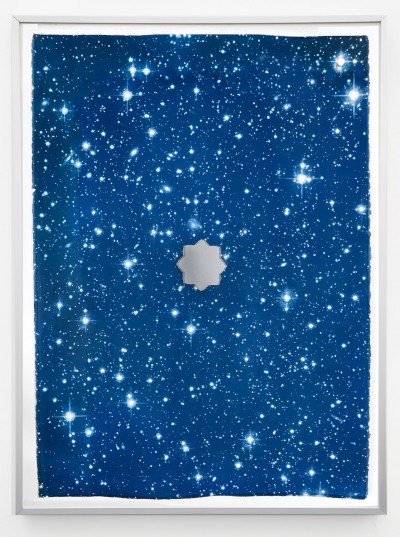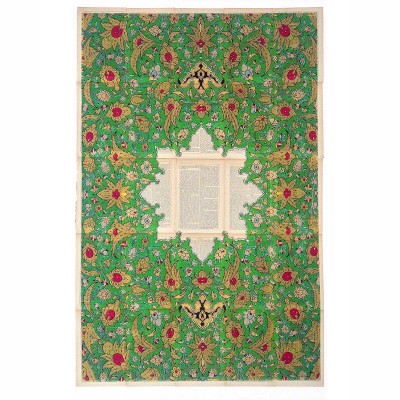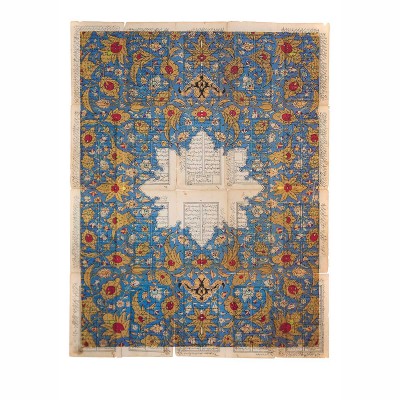Under Every Deep a Lower Deep Opens (Hafez)
Ala Ebtekar
2015
41.5" x 29.5"
Archival pigment print on book pages mounted to Arches
Edition of 10
INQUIRE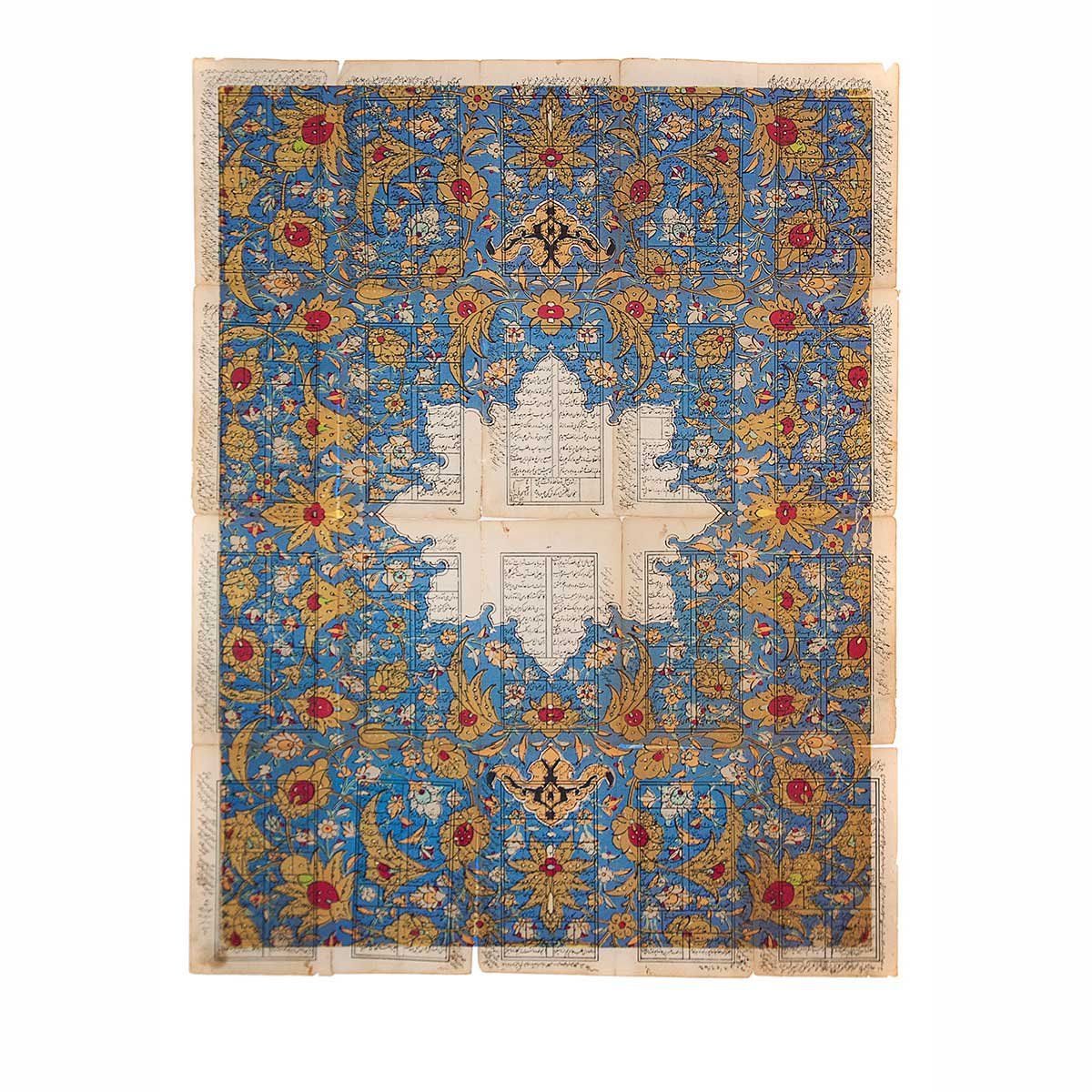
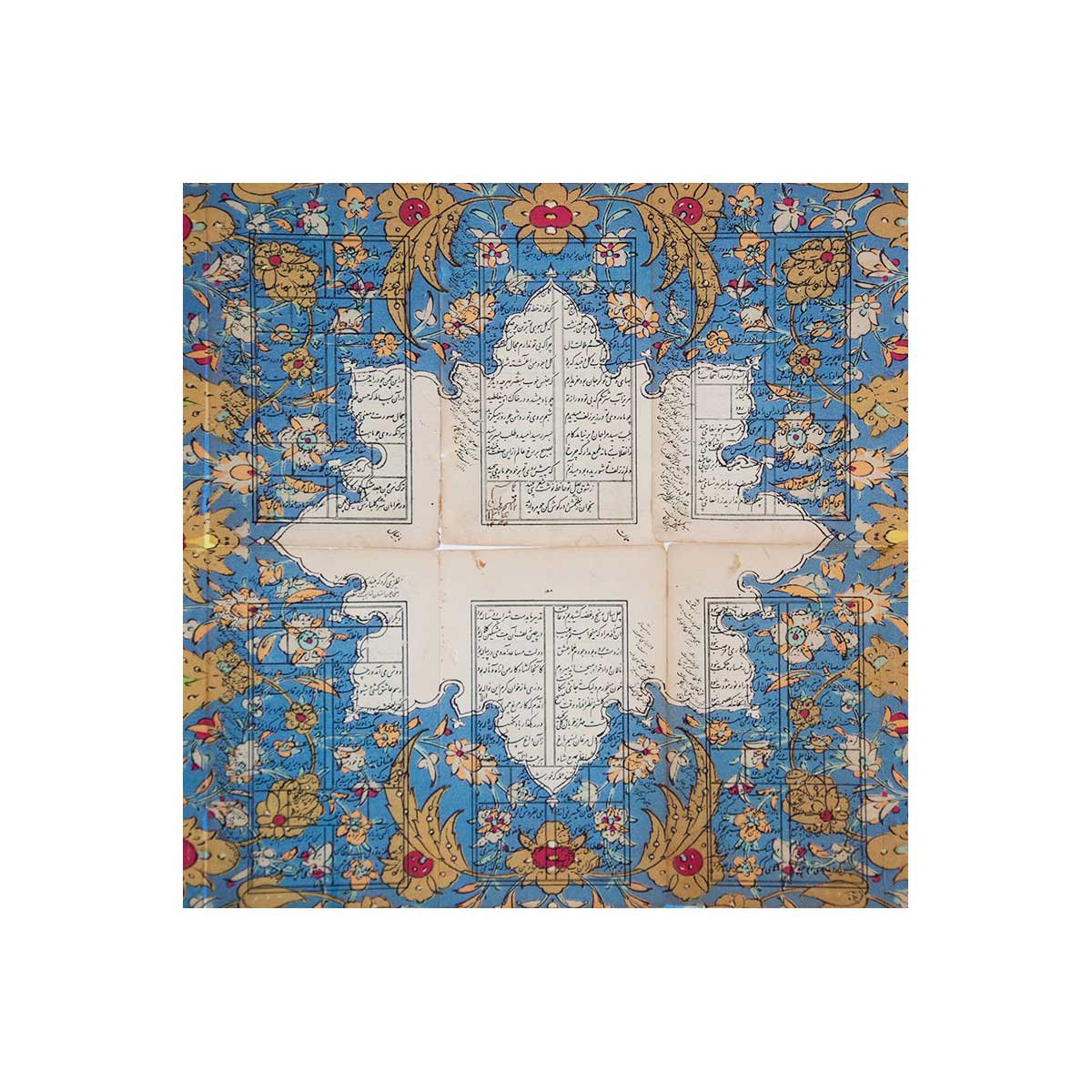
In 2014, Gallery 16 Editions invited Ala to create two distinct but interconnected print editions. The concept was to use two books important to Ebtekar’s work as the foundation for each edition – not only as a conceptual foundation or conceit, but as the literal physical support for each print. The two books are the Divan-e-Hafez, Persian poet Hafez’s revered collection of works, first published in 1680 and Works of Ralph Waldo Emerson, Riverside Edition, published in 1889 by George Routledge and Sons, London.
Each print of Under Every Deep A Lower Deep Opens is produced upon the actual pages of these books. The disassembled pages were adhered to support sheets of Rives BFK. Ebtekar then created an ornate, windowed Persian lattice which is printed over the actual book pages. Each complete edition is the entire disassembled book. The Hafez book yielded a total of ten 41.5 x 29.5 inch prints. The Emerson book yielded a total of eleven 41.5 x 28.5 inch prints.
The title of the two print editions, Under Every Deep A Lower Deep Opens is taken from the line in Emerson’s Circles Essay written in 1841, “Our life is an apprenticeship to the truth, that around every circle another can be drawn; that there is no end in nature, but every end is a beginning; that there is always another dawn risen on mid-noon, and under every deep a lower deep opens.” Emerson understands creativity in an individual as part of a continuous, universal flow.
Ebtekar connects these two literary figures who explore similar concepts of Transcendentalism, philosophy, creativity, and nature. Although their work is separated by over 400 years, overlapping notions in their writing inspire Ebtekar. For Emerson, Hafez became an ideal poet whom he called a ‘poet for poets’. He spent fourteen years reading the poetry of Hafez and translated Hafez’s ghazals from German into English. In the Persian-speaking world, Hafez is regarded as an extraordinary poet whose verses are infused with mystical love and philosophical depth and also as a seer, who was divinely inspired. For centuries many have consulted the words of Hafez for guidance on a range of subjects. Holding the Divan-e-Hafez, they close their eyes, make a wish, randomly turn to a page, open their eyes, and recite the poem as a way to receive existential guidance and moral inspiration.
In this spirit, Ebtekar embraces the notion of chance in the making of this suite of prints. He created an ornate pattern with a center opening resembling a window in an Esfahni-style palace. This opening reveals a random passage from Hafez or Emerson, emulating this Persian tradition and
reinforcing the importance of chance. Ala writes, “We can’t predict where the window of the image falls to illuminate or frame the text. Text and meaning is organized by the viewer. This union has to happen because of the randomness of the universe.”


